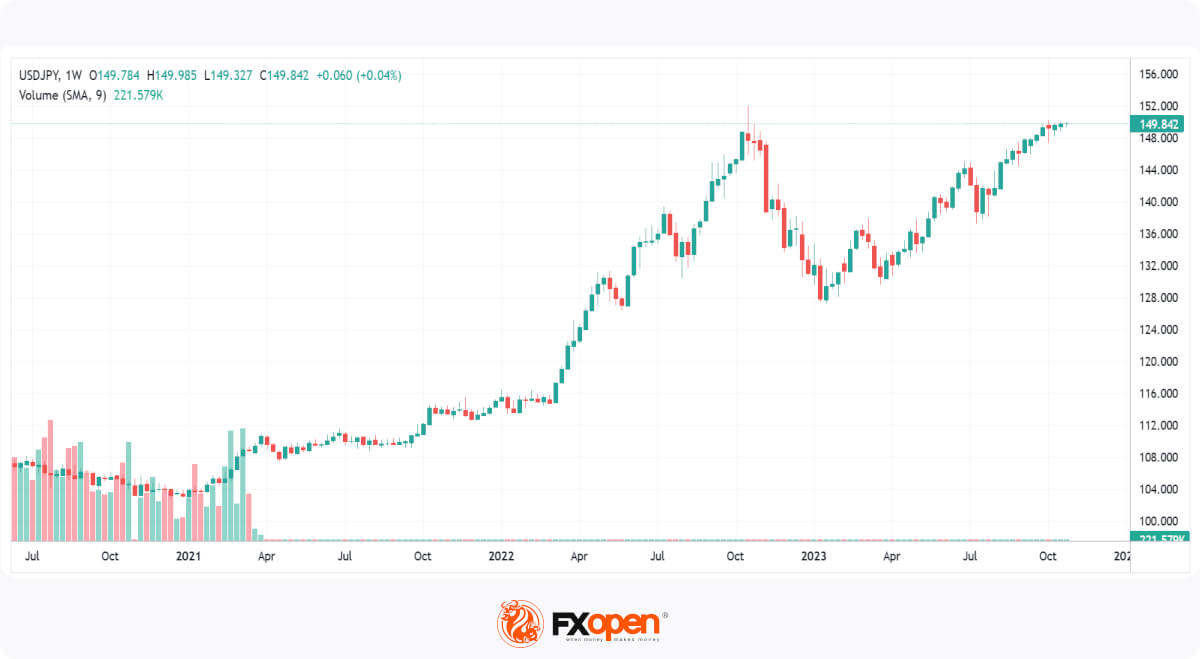Federal Reserve Chairman Jerome Powell has reaffirmed the central bank’s dedication to maintaining an extended period of restrictive monetary policy in the United States.
This commitment has sent shockwaves through the financial markets, triggering fluctuations in stock prices, an upswing in the US 10-year Treasury yield, and a surge in the US dollar against the Japanese yen. The primary goal of this move is to sustain the restrictive policy until there is a strong conviction that inflation can be maintained at the desired 2% level over the long term.
Despite recent US inflation rates aligning with the Federal Reserve’s 2% target, Chairman Powell did not declare victory over inflation control. He stressed that significant inflationary pressures are expected to diminish considerably in the near future. This stern warning, more stringent than anticipated by investors, contradicts the recent uptick in long-term US interest rates and the tightening of financial conditions following the last Fed rate hike.
The Federal Reserve’s adoption of a hawkish stance stems from its deep focus on future forecasts and the associated risks, signalling a greater willingness to tolerate an economic downturn over a resurgence of inflation. The central bank’s decision-making process is also influenced by economic models, such as the Phillips curve, which suggests an inverse relationship between inflation and unemployment.
The Japanese yen has experienced significant volatility over the past week, oscillating against the US dollar multiple times. The USD/JPY currency pair is presently trading around 149.84, indicating a substantial rise in the US dollar’s value against the yen within the Asia Pacific trading session today.
It’s worth noting that the dollar had briefly reached even higher levels before witnessing a sudden drop in value yesterday morning. However, it quickly rebounded, demonstrating the erratic nature of the currency markets in response to these developments.
Critics of the Federal Reserve’s approach argue that it may underestimate the time lag between changes in monetary policy and their impact on domestic market variables like inflation, economic growth, and unemployment. They point to the complexity of the relationship between inflation and unemployment, influenced by factors such as labour market dynamics, globalisation, and technological advancements.
Nonetheless, it is acknowledged that when unemployment reaches exceptionally low levels, a discernible correlation between unemployment and inflation does emerge. This suggests that the Phillips curve analysis may hold true under specific conditions. Consequently, the Federal Reserve intends to maintain its restrictive policy stance until it is convinced that unemployment will not rise, ensuring a sustainable decline in inflation to its coveted 2% target.
The Federal Reserve’s focus on low inflation and willingness to accept rising unemployment carries substantial implications for financial markets, which may be ill-prepared for such economic outcomes. The central bank’s resolve reflects a cautious approach in navigating the complex dynamics of the US economy.
FXOpen offers spreads from 0.0 pips and commissions from $1.50 per lot. Enjoy trading on MT4, MT5, TickTrader or TradingView trading platforms!
This article represents the opinion of the Companies operating under the FXOpen brand only. It is not to be construed as an offer, solicitation, or recommendation with respect to products and services provided by the Companies operating under the FXOpen brand, nor is it to be considered financial advice.













